An influx of bats could scupper plans for a 4,000-year-old historic mound to be partially demolished for further research.
At 62ft high, the Castle Mound, also known as Marlborough Mound, is the second-largest Neolithic mound in Europe.
Located in the grounds of Marlborough College, Wiltshire, it is even rumoured to be the burial place of the legendary wizard Merlin.
In March, Marlborough College applied for planning permission to try and ‘enhance its setting’ by demolishing structures that ‘cut into’ the west side of it.
The partial demolition is set to aid further archaeological research, with the ultimate goal of installing a new curved stone-faced revetment to support it.
But now, concerns have been raised that the buildings located on the historic site have become ‘a haven for bats’, generating doubts about whether they should be removed.
Wiltshire Council’s ecology team said that they submitted a Preliminary Roost Assessment which uncovered that ‘the buildings on site are of moderate and high potential for roosting bats’.
They added: ‘The buildings on site appear to have some potential for roosting bats and there are records of bats, including roosting bats, in the local area.
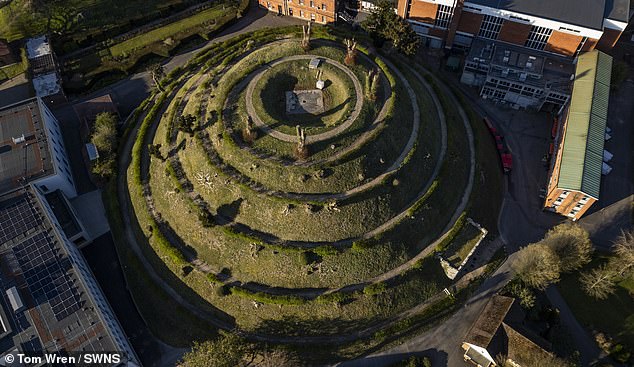
An influx of bats could scupper plans for 4,000-year-old Marlborough Mound (pictured) to be partially demolished for further research. In March, Marlborough College applied for planning permission to ‘enhance its setting’ by demolishing structures that ‘cut into’ its west side
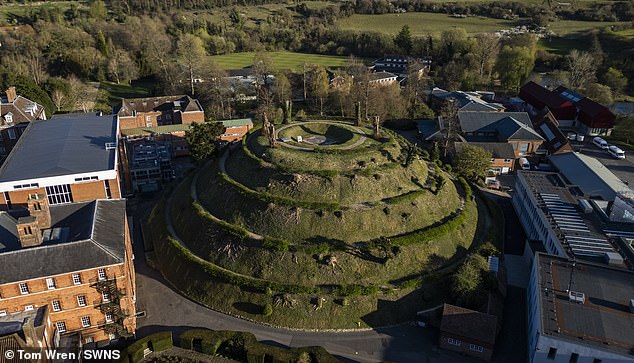
At 62ft high, it is the second-largest Neolithic mound in Europe. Located in the grounds of Marlborough College, Wiltshire, it is even rumoured to be the burial place of the legendary wizard Merlin
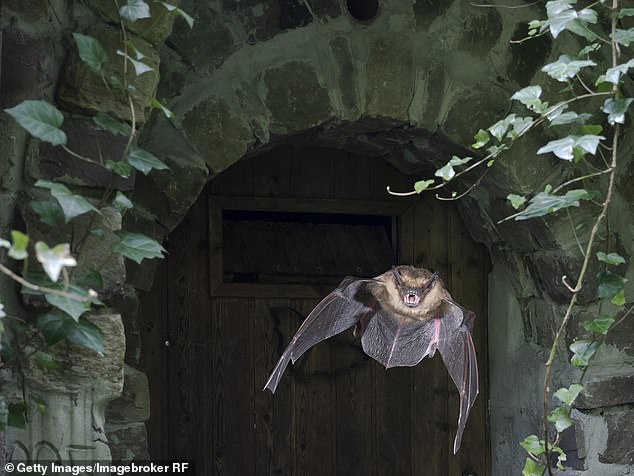
But now, concerns have been raised by Wiltshire Council’s ecology team that the buildings located on the historic site have become ‘a haven for bats’, generating doubts about whether they should be removed (file image)
‘The assessment recommends that further surveys are carried out to determine the roosting status of each building and the requirement for mitigation (if any).
‘The ecology team should be reconsulted once the results for all the surveys are available.’
They added that compensation / mitigation measures must be incorporated into the proposals, with the Local Planning Authority (LPA) needing to be ‘reasonably sure that the proposal will not result in significant adverse effects on proposed habitats or species.’
In documents published in 2024 to support the application, Marlborough College described the Mound as a ‘nationally important scheduled monument’ with its significance ranging from its prehistoric use, the artistic interest and the historic links to the Seymour family.
Since 2022, with Historic England consent, various works have been carried out on the historic site.
These including movement monitoring, felling of mature trees to preserve the embankment stability, a footpath upgrade, planting of hawthorn to footpath edge and new stone retaining walls.
The newly proposed works, carried out on behalf of the Marlborough Mound Trust, are set to enable archaeologists to investigate a particular cross-section, while also creating a more ‘visually pleasing’ monument.
It is also hoped that the partial demolition will help to enhance the visitor experience of the new Mound Information Centre being completed in the college grounds.
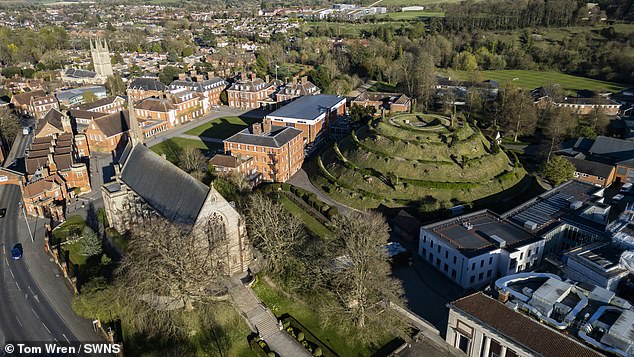
In documents published in 2024 to support the application, Marlborough College described the Mound as ‘nationally important scheduled monument’ with its significance ranging from its prehistoric use, the artistic interest and the historic links to the Seymour family
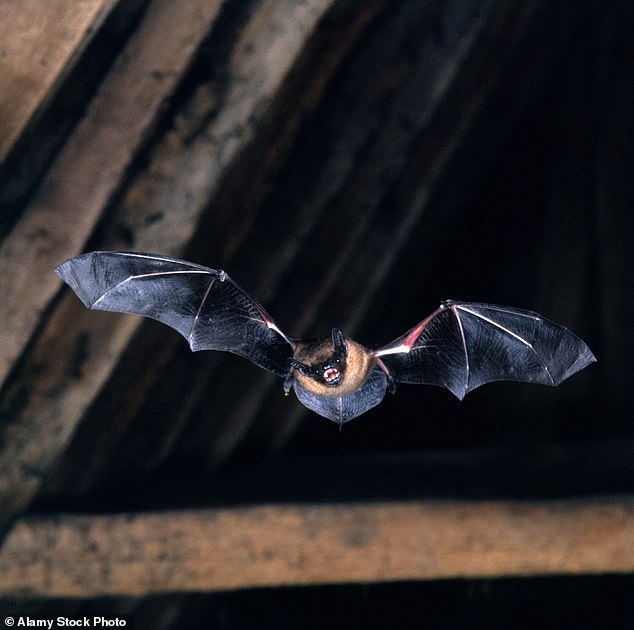
Wiltshire Council’s ecology team said that they submitted a Preliminary Roost Assessment which uncovered that ‘the buildings on site are of moderate and high potential for roosting bats’ (file image)

The mound is located in the grounds of Marlborough College, Wiltshire. The Princess of Wales attended the prestigious school between 1996, aged 14, and 2000, prior to attending St Andrew’s University. Pictured: The Princess of Wales in the middle, back row with her hockey team outside the College
Often celebrated throughout the history of Marlborough College, where the Princess of Wales, went to school, the site has been carbon dated to 2,400BC.
It also contains part of a medieval castle and also some 17th and 18th Century garden features.
The buildings imbedded into the mound include a decommissioned plant room, disused toilet block and a carpentry workshop which all have ‘very little or no heritage value.’
The supporting statement added that demolishing the buildings will allow ‘the setting of the Mound to be enhanced with 360 degree visibility’.
They added: ‘It is proposed to demolish these buildings which partially block the viewing of the Mound as they are either redundant or in the case of the workshop relocate the activities to elsewhere in the college.
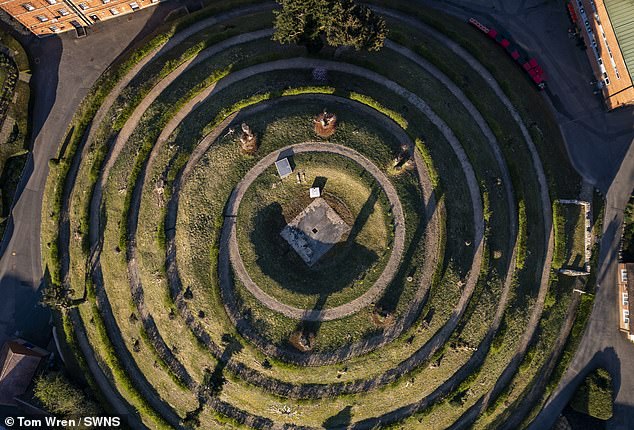
Since 2022, with Historic England consent, various works have been carried out on the historic site. These including movement monitoring, felling of mature trees to preserve the embankment stability, a footpath upgrade and new stone retaining walls.
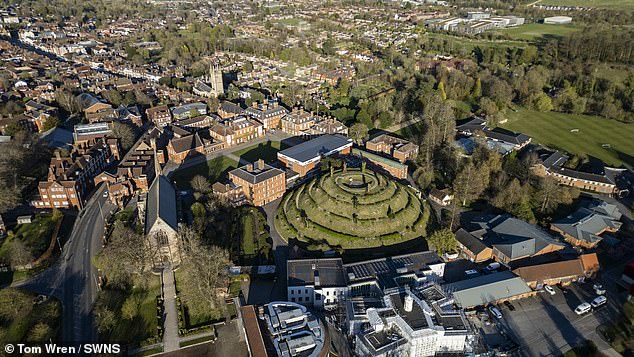
The newly proposed works, carried out on behalf of the Marlborough Mound Trust, are set to enable archaeologists to investigate a particular cross-section, while also creating a more ‘visually pleasing’ monument
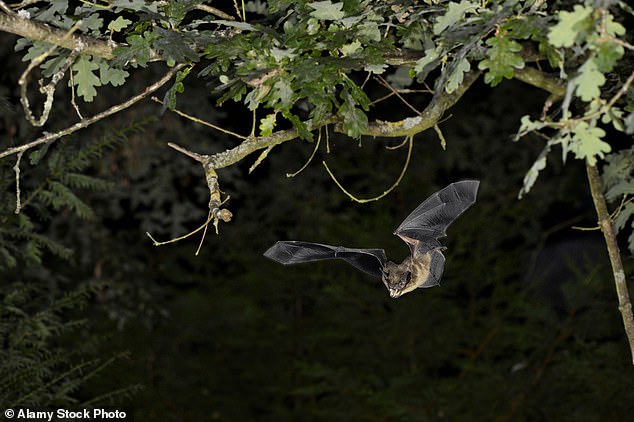
Wiltshire Council’s ecology team added that due to concerns about the impacts on bats, compensation / mitigation measures must be incorporated into the proposals (file image)
‘The demolition work will provide a great opportunity for further archaeological surveys to be carried out and provide more insight into the Mound build up and its history.’
The application insisted that special care will be taken to ensure there is no digging into the Mound’s bank or earth pulled away.
Green foliage between the Mound and the redundant buildings will also be carefully removed.
At present, opportunities to see the mound are limited to certain open days and pre-arrangement.
Alongside being located in a school, the limited hours are also due to conservation risks and the spiral path at the top having a limited weight capacity.
Wiltshire Council is expected to make a decision on the application in August.











